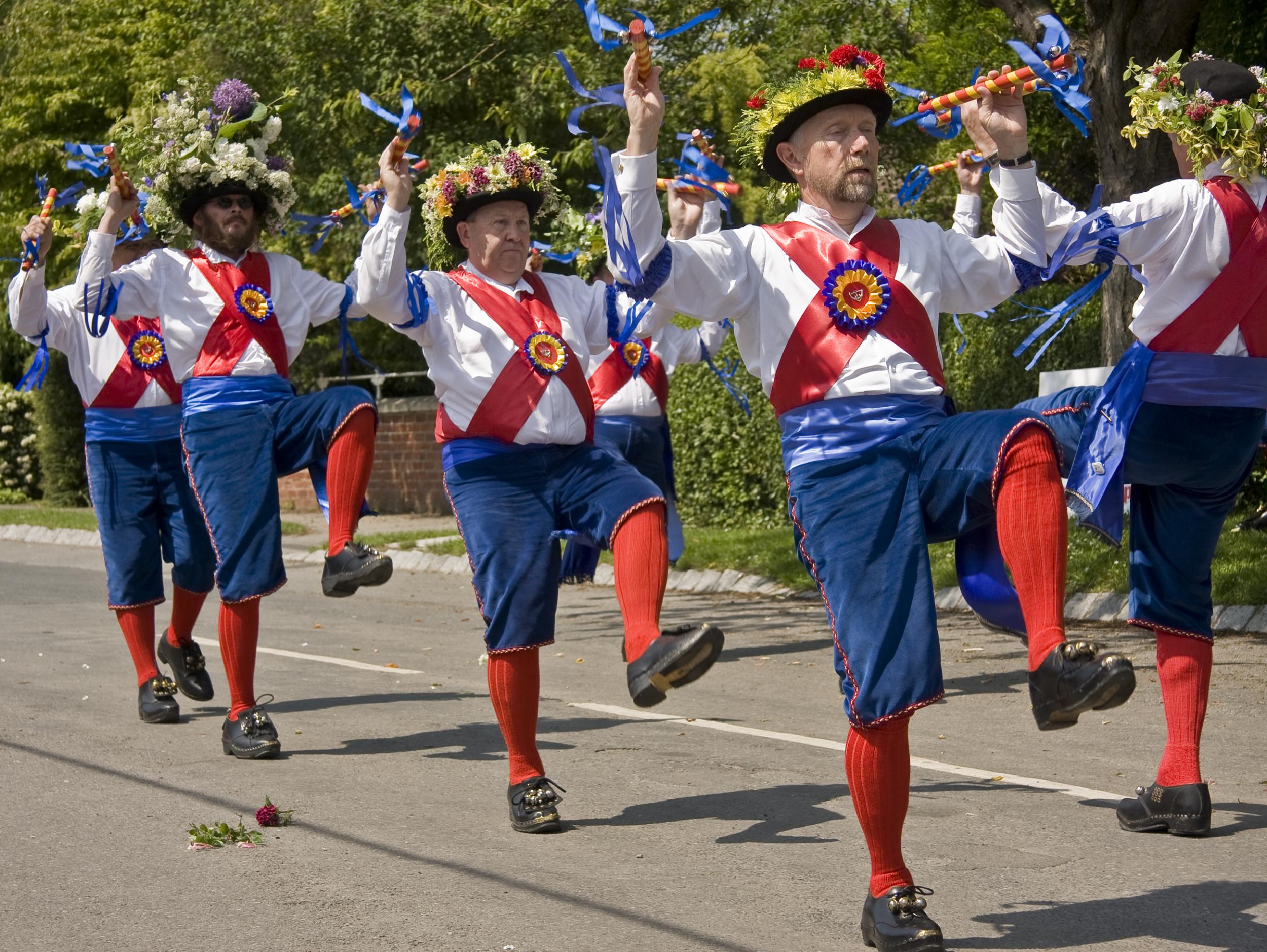Happy feet: Why dancing is a route to wellness
Like walking and staring at the sea, dancing works as a route to wellness because it’s natural. Christine Manby explores why the activity that requires no special equipment, a partner or even music makes us feel so good


The season of the dance is upon us! On 1 May, children up and down the country will be getting themselves into a terrible tangle around the maypole. Grown men and women will be donning bells and hitting each other with sticks. In Rochester they’ll be dancing dressed as chimney sweeps. In Padstow, they’ll be skipping around a terrifying “obby oss”: a snapping model of a horse’s head with a cape attached for the purpose of “catching young maidens”.
Human beings have been dancing in celebration and supplication for centuries. The earliest records of dancing are found in Egypt and India at around 3300 BC. It’s likely, however, that we’ve been dancing since early man (or woman) did a victory jig having seen off a sabre-toothed tiger. Dancing is in our bones.
Like walking and staring at the sea, dancing works as a route to wellness because it feels so natural. It’s another activity that requires no special equipment. You don’t need to have a partner. You don’t even need to have music. The health benefits are well documented: increased aerobic fitness, better flexibility and improved muscle tone. There are psychological benefits too, including greater self-confidence and self-esteem. Dancing is good for your brain. It increases levels of serotonin, the happy hormone. It may also help to foster the development of new neural connections.
A recent study by researchers at The Albert Einstein College of Medicine in New York investigated the effects of a number of leisure activities on dementia risk in the elderly. They studied 11 kinds of physical activity including cycling, tennis and golf. The only activity found to lower dementia risk was dancing. It’s believed that the unique combination of physical effort with mental concentration and social interaction gives dancing its preventative health benefits.
I’ve loved dancing since I was small. As a young girl, I took ballet lessons. Unfortunately, knock knees and terrible shyness put paid to my ballet career. I swerved the Christmas gala and the chance to wear a red tutu and never went back again. As a horribly self-conscious teenager, I jigged on the sidelines at every disco but as a twenty-something student, I found my dancing feet again at the university ballroom dancing club, loving the grace of the quick step. In my early thirties, I had a boyfriend who was big into reeling. I loved the speed and the music and the dizzying turns, though at one posh Scottish ball he whirled me straight into another’s dancers elbow and I ended up with a split lip.
More recently, I was corralled into a “5 Rhythms” session. My friend Peyvand first asked me to go 5 Rhythms with him in 2002. Sixteen years later, I felt ready. We met at a cafe in Vauxhall. Peyvand had forgotten his dancing kit. When he explained there was no way he could dance in his T-shirt and jeans “because of the sweat”, I very nearly bolted. He walked me all the way into the venue so I couldn’t back out.
In retrospect, I was glad to experience 5 Rhythms for the first time on my own. Created in the 1970s by Gabrielle Roth, 5 Rhythms is a series of freestyle dances to... er, five rhythms: flowing, staccato, chaos, lyrical and stillness. They’re danced in a sequence known as a wave. Roth believed that 5 Rhythms, which she based on indigenous traditions and Eastern philosophy, could help us connect to our souls. Everything is energy, she said.
Standing in the furthest corner of the church nave where the session I attended was held, I was transported back to ballet class. The middle of the floor was already full of people who definitely knew what they were doing. There was a lot of ostentatious stretching going on. Most people had come dressed for a festival. My Pilates gear was from distinctly the wrong postcode.
The music started. I did a bit of swaying, losing myself in the first rhythm. Flowing I could do. By staccato I was getting the hang of things. There were no prescribed steps. No rules. Chaos was like a rave without drugs. I started to understand why people at a rave might need drugs... but I was doing fine until the dance leader suggested we all use our bodies to mark out an imaginary circle that was to be our own sacred space. I used my arms to trace a circumference in the air. At the same time, another dancer started marking out her own sacred space by rolling backwards and forwards across my feet. Literally across my feet. By that time, the carpet was starting to feel soggy with the sweat Peyv had warned me about and I was worried about verrucae anyway. I ducked out before I got to stillness.

However, on balance, that session of 5 (well, four and a bit) Rhythms was a success for me. I definitely felt as though I’d had a workout. I felt much lighter in my body and in my head as I walked back to the Tube. I didn’t, in the end, get a verruca.
Great dance sessions can definitely change more than your body. The summer after I finished university, I volunteered at an accessible adventure playground for children with disabilities. My fellow volunteer Rhona, a wheelchair user with spina bifida, quickly became a good friend. One weekend, she said she’d take me dancing. Her way.
I met her in a community hall in Gloucester for a wheelchair disco. The only person on the dance floor without a set of wheels, I towered above everyone else. As a result, I missed out on the conversation, the jokes and the shared glances of attraction. I felt awkward, which was exactly what Rhona had intended. It was a neat lesson in what it’s like to be excluded. As I dragged over a chair so I could be at Rhona’s eye level again, she said: “That’s what it’s like for me all the time.” Then she grabbed my hands and we did a bit of nifty arm-dancing to The Cure. Rhona died suddenly when we were in our late twenties but that night in Gloucester will always be one of my favourite dance memories, and I think of Rhona whenever I am secretly working on my arm moves in front of the mirror.
So this week’s wellness prescription is to embrace your primeval urge to dance at the arrival of spring and have a quick shimmy round the kitchen while you wait for the kettle to boil. It’s free, fun and terribly good for you. Or if you can get outside or have a bit more space, I thoroughly recommend Prancercise. Joanna Rohrback, author of the book Prancercise:The Art of Physical and Spiritual Excellence, went viral a while ago with a video of her own unique style of dance workout.
Rohrback describes Prancercise as “a springy, rhythmic way of moving forward, similar to a horse’s gait... ideally induced by elation.” In coral cardigan and tight white pants, she half-walks, half-canters around the park to a glorious soft-rock soundtrack. I would say, don’t knock it. I use Prancercise myself and only weigh three stone more than I did at eighteen. Also, you can do it in pearls and without disturbing your hair. That’s a wellness win for me.
Join our commenting forum
Join thought-provoking conversations, follow other Independent readers and see their replies
Comments